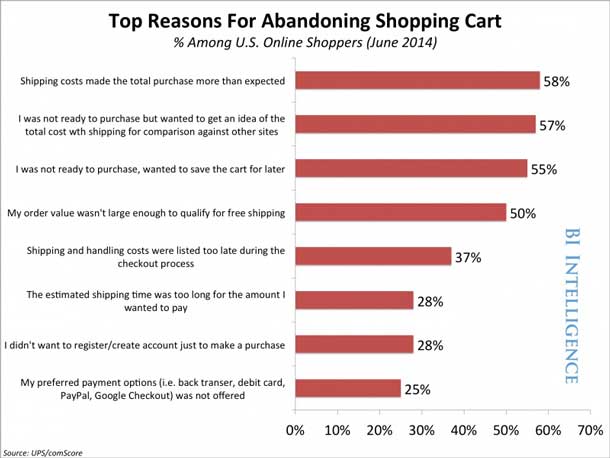 THUNDER BAY – BUSINESS – As online consumer spending continues to increase, the same can’t be said for Canadian small to medium sized enterprises’ (SMEs) use of e-commerce.
THUNDER BAY – BUSINESS – As online consumer spending continues to increase, the same can’t be said for Canadian small to medium sized enterprises’ (SMEs) use of e-commerce.
Citing changing consumer demands, international trade restrictions, and lack of available skilled labour as the main challenges in adopting e-commerce technology, most Canadian SMEs realize the importance of selling online but do not engage in it. A recent survey showed a stagnant number of businesses (21%) do not sell online, despite its ability to enhance business performance and increase profitability. With more money being spent through e-commerce than ever before, businesses that do not conduct e-business run the risk of losing customers in this competitive marketplace.
The Thunder Bay and District Entrepreneur Centre’s Digital Resources and Outreach service offer assistance in the area of marketing and communications, including e-commerce, to new, aspiring, and existing entrepreneurs. If you’re one of the many businesses who could increase sales with the use of e-commerce, contact the Entrepreneur Centre to receive free information and referrals to local resources to get your e-business working for you.
So how can your small business find e-commerce success? Look at what makes a great e-business.
Consider: What do you sell? Can you ship it? What platform will you use?
Your Products and Services
Is your product or service unique to your business; and how available is it elsewhere? Truly unique products (that you manufacture rather than resell) minimize the competition and will make you stand out in the market. If you can offer your customers something that they can’t find anywhere else, you’ll have them in the palm of your hand along with the freedom to set your own price.
There is opportunity for retailers and resellers but more competition means they will have to compete on service and provide a great customer experience. While competing on the bases of lowest price is a strategy, most small businesses cannot compete with online big box stores and e-commerce giants such as Amazon.
Shipping and Handling
Also consider: how shippable is your product? Big and heavy items come with a high shipping cost which can be a dealbreaker for shoppers and create a barrier to your online sales. Inventory that is lighter and more compact will ship easily and cost-effectively.
Sort out the logistics of your e-store before you launch to ensure that you are able to have your inventory transported at a reasonable expense.
Platform
A fully functional e-commerce platform build into your website is an ideal option, although costly and labour intensive. With your own website, you have full control over the look and feel of your e-store, but there is more work involved in creating and maintaining it on an ongoing basis. Website add-ons and plugin applications such as Woo Commerce and Shopify can help to simplify this process.
Other available e-commerce platforms such as Etsy, Amazon, and eBay provide a simple, streamlined service, but charge a small listing fee per item you have for sale.
|
Operating your e-store is just as important as opening one, so once your e-commerce website is up and running, follow these best practices to maximize sales and profitability:
- Use quality photography
Good, clear photos are a must when selling your products online. When was the last time you bought something over the Internet without seeing a picture of it first? Shoppers need visuals – simply explaining the items isn’t enough. People who shop in bricks-and-mortar locations are used to picking up the items, reading the labels, and trying them out before making a purchase. Give your shoppers as many visuals as you can by including multiple photos of your products, providing different angles and close-up views to show detail. Showcase key features, as well as any labels or tags on the items.
Entrepreneur Tip: Consider investing in a professional-grade camera. The quality of your product pictures will have a direct effect on your customers’ purchasing decisions. If you cannot afford a better camera, learn to take good, clear photos on your smartphone.
- Write comprehensive item descriptions
Online shopping is an intangible experience (shoppers cannot physically see and feel the item) and you will have to give them all the information they could possibly need to make a decision to buy.
Put yourself in the shoes of the shopper. They may be asking themselves: How do I use this? What/Who it is it for? How is it made? How do I care for it? Descriptors such as material, size, measurements, ingredients, colours, and textures are a good start.
Entrepreneur Tip: Take your item descriptions a step further by linking short videos that demonstrate how the items are used or provide instruction.
- Provide company information and clear return & exchange policies
Your buyers want to know who they’re doing business with. Make them feel comfortable by explaining who you are in your company profile or ‘About’ page on your website. Include full contact information (mailing address, phone number, fax, and email address) should they have any questions or wish to speak with a representative.
Also be sure to clearly explain your store’s return & exchange policy. Should a customer dispute arise, you will need to refer to your policy to resolve the problem.
A privacy policy should also be found on your website to advise shoppers how their information will or will not be used.
- Ship for free
When online shoppers are slapped with an unexpectedly high shipping cost upon check-out, they are likely to think twice about the purchase altogether. High shipping costs is the number one reason for abandoned shopping carts online.

Free shipping is often expected when it comes to online shopping, so try to offer it to your customers whenever possible. If you cannot ship for free on all purchases, offer free shipping on purchases that meet a minimum amount (minimum purchase of $100, for example) to make it worth your while.
Entrepreneur Tip: Work the shipping costs into your product pricing with slight increases so that you do not have to charge extra for shipping. Your customers may be more likely to tolerate a higher price on the item than on a shipping charge. Upping the item price to eliminate the shipping cost changes the decision process, as shoppers who are committed to price of the item will be more likely to follow through on the purchase if it ships for free. In the end, your customers may end up paying the same amount, but you will have altered the thought process to alleviate the shock of high shipping costs.
- Ship fast
Don’t sit on your orders; ship items right away – preferably the same day, if you can. The faster the buyers receive the items, the happier they will be. Your customers are demanding same-day shipping, or at least next-day shipping, so don’t wait!
- Provide great customer service at every step
Great customer service comes down to great communication. Upon receiving an order, send the customer a confirmation email that 1) thanks them for their purchase and 2) summarizes their purchase and shipping details (method, delivery date, etc). Send them another email to let them know their order has shipped that also summarizes their order information and expected delivery date.
Address customer complaints politely and professionally, always giving the customer the benefit of the doubt. Respond to their inquiries in a timely manner do as much as you reasonably can to keep them satisfied.
- Facilitate repeat business
It is always easier (and cheaper) to keep an existing customer than it is to acquire a new one. Invite your customers to follow you on social media, subscribe to your newsletter, and partake in exclusive promotions. If you can maintain some relationship with them and are able to continue marketing to them via social media or through your newsletter, they will be more likely to keep buying from you.

Entrepreneur Tip: Use incentives such as discounts and promotional offers to draw previous customers back into your e-store. Include a thank-you coupon with each purchase to make every buyer a repeat buyer.
- Leverage your marketing channels
Your social media networks can act as a funnel to your website or e-store. Do not ignore this audience. Instead, tailor your posts to promote your products and services to drive traffic and boost your sales.
 You can also utilize your mailing list to promote your store to potential buyers and reach even more of the market with online advertisements. Consider writing a blog to drive even more website traffic.
You can also utilize your mailing list to promote your store to potential buyers and reach even more of the market with online advertisements. Consider writing a blog to drive even more website traffic.
Entrepreneur Tip: Include the link to your e-store on all business cards and stationary. If your e-store is housed outside of your corporate website, definitely link it to the site. Better yet, implement a strong call to action on your website with a Shop Now button that links directly to your e-store.
Does your business sell online with e-commerce? The Entrepreneur Centre’s Digital Resources and Outreach service helps businesses to find new and better ways of marketing themselves, and can assist with planning a website and selling online with e-commerce. Call (807)625-3452 or email apenko@thunderbay.ca to learn more.
The Thunder Bay and District Entrepreneur Centre (EC) offers FREE and confidential services to help small businesses start up, expand, and succeed. The Entrepreneur Centre can assist with writing a business plan, securing funding, marketing your products and services, and accessing other available resources in the community. They also provide free workshops and training seminars to equip and empower small businesses to perform the best they can. For more information or to schedule an appointment, call (807)625-3960 or visit www.EntrepreneurCentre.ca.
 |
 |

 BioPetMeds used the Entrepreneur Centre’s Digital Resources & Outreach service to learn about how a streamlined e-commerce platform with payment processing could increase sales of its
BioPetMeds used the Entrepreneur Centre’s Digital Resources & Outreach service to learn about how a streamlined e-commerce platform with payment processing could increase sales of its 




